Solar will get too cheap to connect to the power grid.
The cost of solar panels is plummeting, and this will flood the power grid with cheap electricity. But that’s just Act 1. We won’t stop building solar at the limits of the grid - we’ll build a lot more.
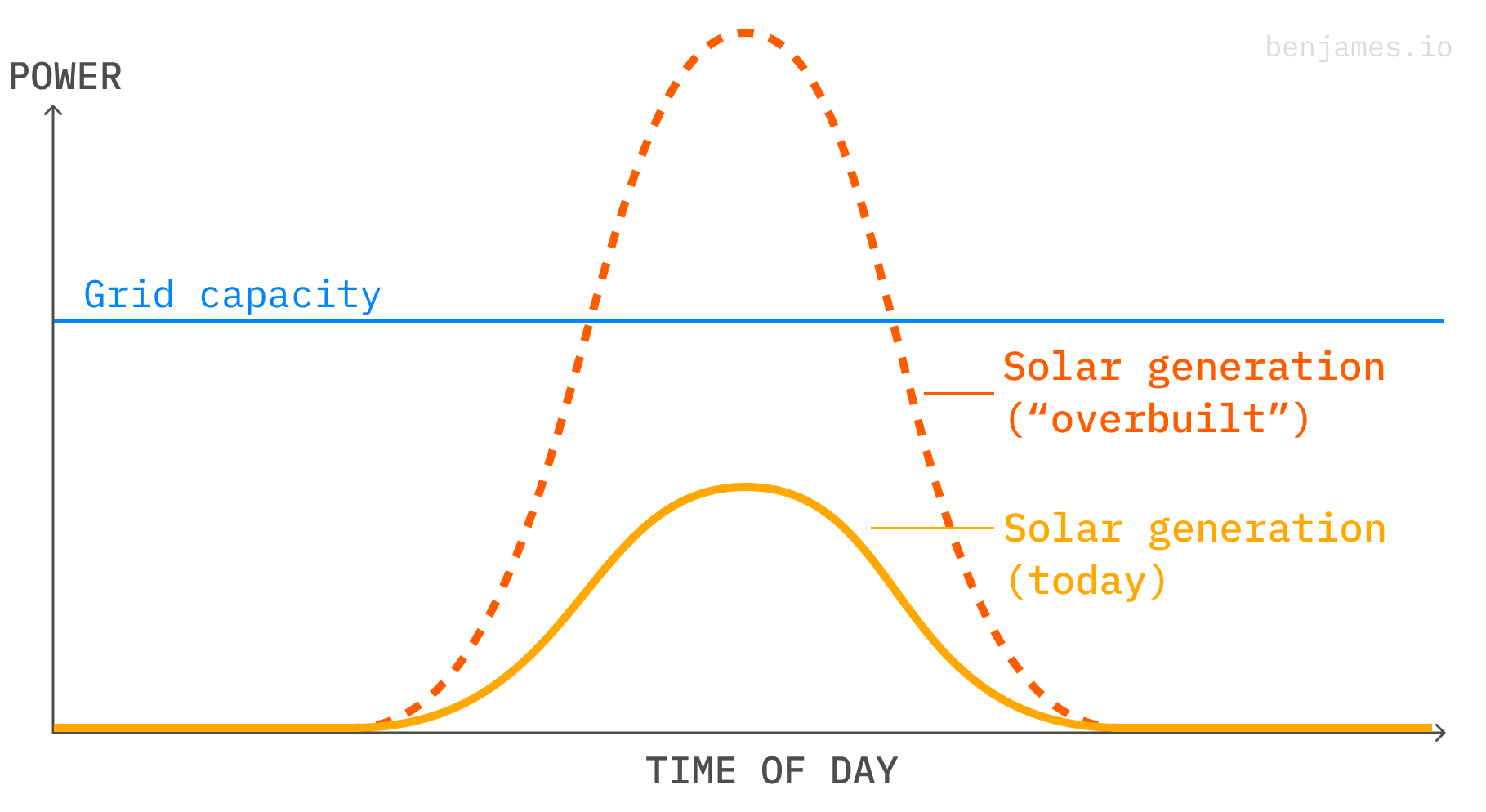
This post explains why we'll keep building more, and what we'll do with the excess.
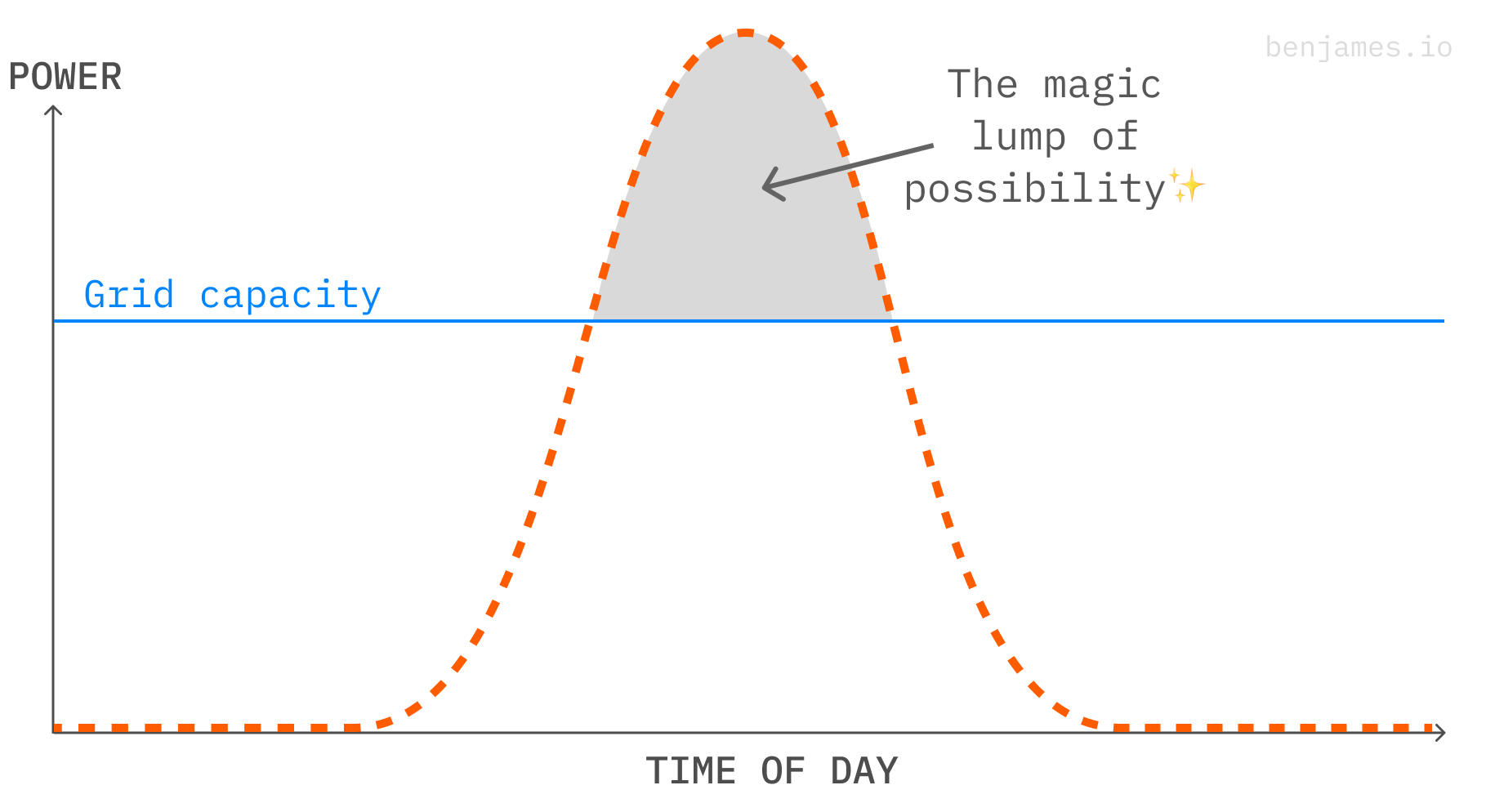
There's three parts to explain:
- Why solar will get cheap
- Why solar will saturate the power grid
- What we will do with the excess.
Solar power is going to get very cheap.
The solar panel is wizardry manifest. It literally prints energy from free shit that falls out of the sky.
A very flat rock that whispers to the light of heaven and coaxes it into bottled lightning. Without even moving.

Solar PV is the only way to make electricity with no moving parts. This makes it much easier to mass manufacture than other energy sources.
If you can make something that resembles a flat silicon pebble, manufacturers will look at it and say “hell yeah”. Humans are very good at driving down the cost of flat silicon pebbles - think semiconductors, windows, LEDs and touchscreens.
That means that solar has a tremendous learning rate. The more solar you make, the cheaper it gets.

This means that solar deployment is accelerating at breathtaking speed. Most of the world's solar power was installed in the past 30 months. In fact, China installed more solar in 2023 than the US has installed in history.
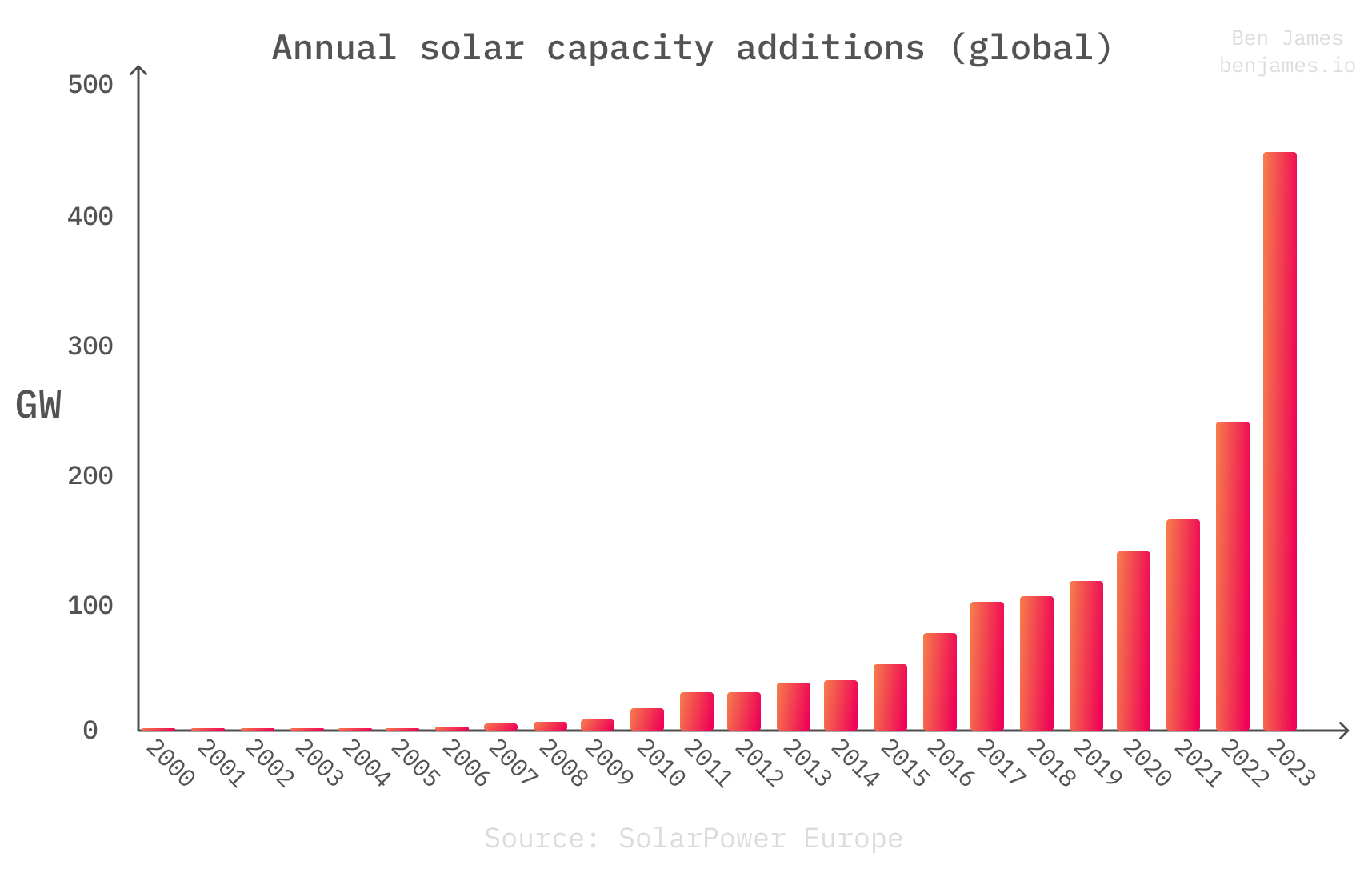
In the UK in 2024, I can go online and buy a solar panel with the same dimensions as a fence panel, for only double the cost. In five years, the cost of solar will have halved again.

Solar will saturate the power grid.
Today, most solar gets connected to the electricity grid. But the more that we connect, the harder it is to hook up new solar. This is for two reasons.
Saturation reason #1: Solar competes with solar (“cannibalisation”)
Solar panels all generate power at the same time of day: when the sun’s out.
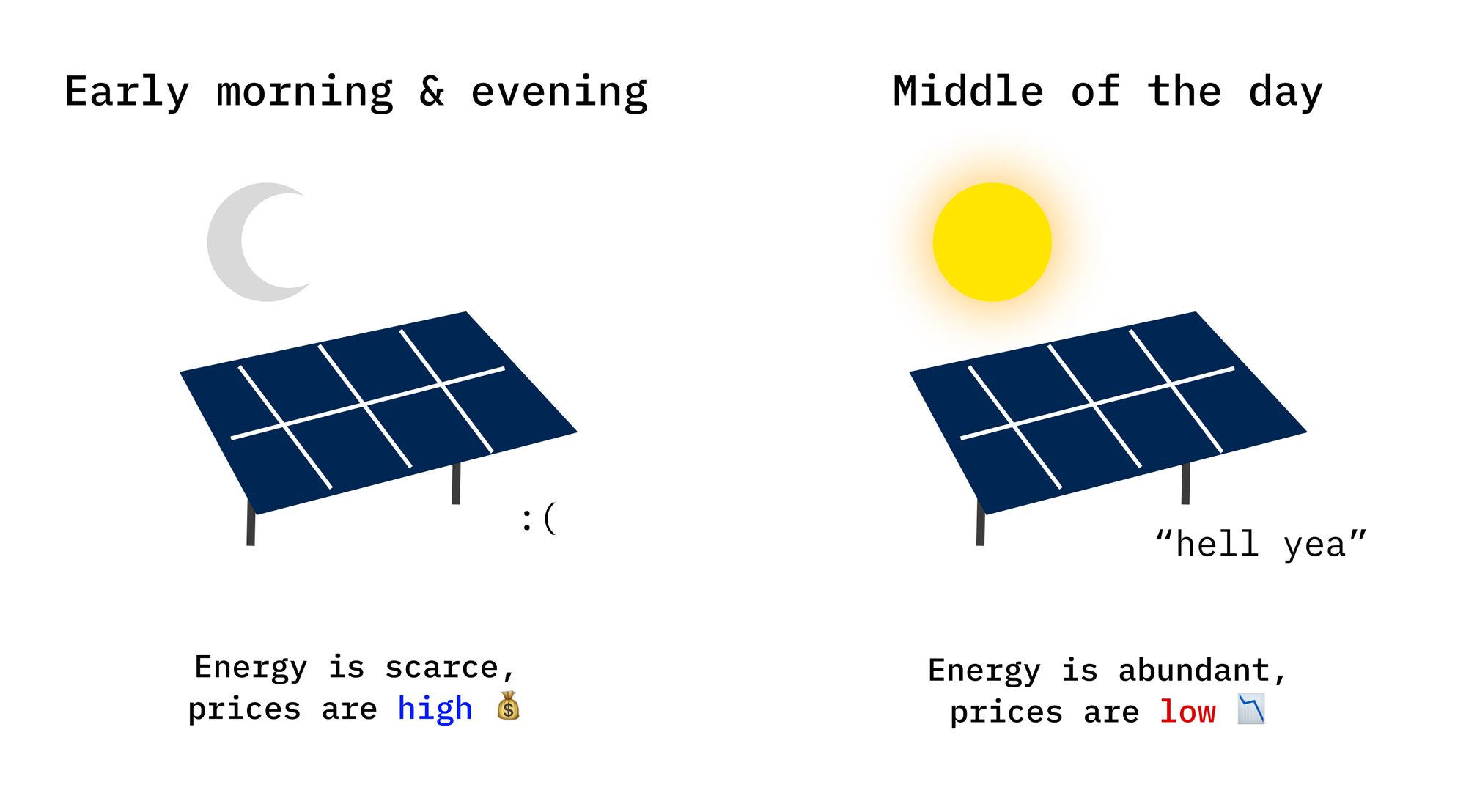
Adding more solar drives down electricity prices when it’s sunny, because energy supply in sunny hours increases. This means that all solar panels get paid less $$$ per unit of energy produced. If you add a lot of solar, at some point it becomes uneconomical to build the next marginal panel. You are just adding electricity at times that nobody needs it (although we are still very far from this point).
Much of the looming demand from EVs and electrified heating is flexible, meaning that a lot of future electricity demand will intelligently align with the greenest and cheapest power. This is what we are working on at Axle Energy.
When there’s enough surplus energy supply from renewables, prices can even go negative. That's great news for consumers - who get paid to use energy - but it's bad news for renewable generators. Too much negative pricing will mean that new renewables don't get built, because they won't break even.
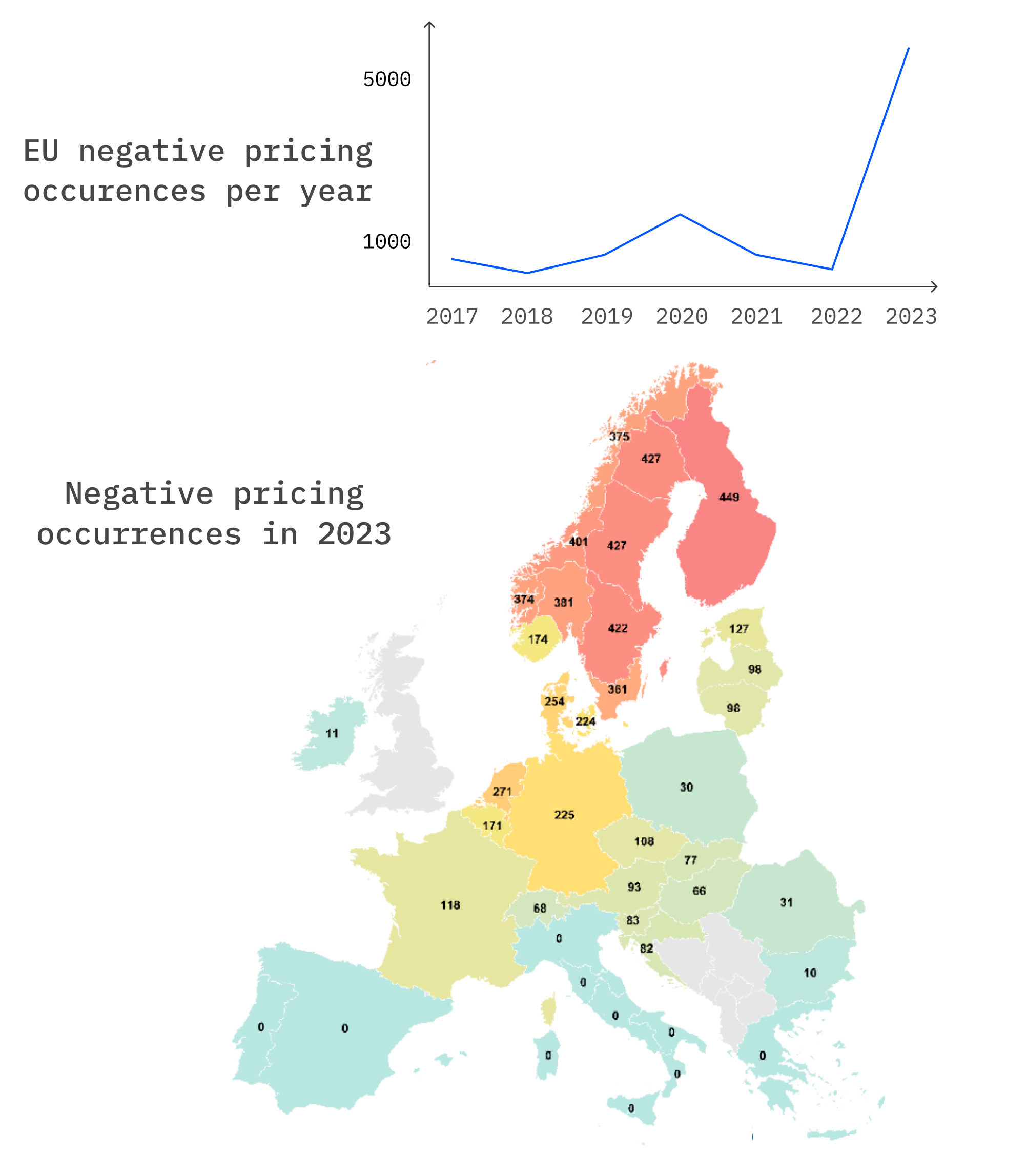
Saturation reason #2: Grid capacity
A surprising thing about the power grid is that it’s very difficult to connect up new electricity generation. Even if solar farms are quick to build, they are not quick to integrate with the grid.
In the UK, the average wait for a grid connection is more than 5 years, and over 40% of queuing projects have a connection date beyond 2030.
In the US, the size of the grid connection queue has increased over 7x in the past decade, and 95% of the queue is solar, wind and batteries. The capacity in the queue is now more than twice the installed capacity of all existing U.S. power plants.
What to do with all the solar?
Solar will saturate the power grid, but that doesn’t mean that we’ll stop building it. It just means that we’ll use it off-grid.

We can opt to either store the magic lump for later in the day (#1), or use it at the time of production (#2).
#1: Solar and storage
Free electricity in the middle of the day, followed by high prices a few hours later? That is a dream day at the office for the lithium-ion battery. The more solar we install, the more we will be deluged by batteries - bathing in volatility like pigs in mud. If you are not yet sold on the idea that batteries will eat the world, you should read these posts. Like solar, the costs of lithium-ion batteries are plummeting every year.
The problem: we won’t have enough grid capacity to dump solar energy into batteries through the high voltage transmission system. We’ve already established that when the sun is out, we’ll blow through the limits of what the grid can handle.
This means that solar and batteries will have to zippity-zap each other without touching the transmission grid. Hence: solar and storage will have to be locally installed. This means we’ll get co-located utility solar and storage, homes with personal batteries for their solar, and new batteries springing up next to existing solar generation.
To be clear, a lot of the electricity transferred between solar farms and big batteries will still go through parts of the local distribution grid. And a lot of this solar will be under-gridded, rather than entirely off-grid. But it would be foolish to rely on new transmission lines to absorb our entire future solar capacity. Transmission lines are expensive and slow to build; batteries are cheap and quick to deploy.
#2: Solar for intermittent processes
Using batteries to backup solar is intuitive. Less obvious is the idea of surrendering to the sun, and only using energy during the magic lump.
If you only use energy for one quarter of the day, your solar system gets much cheaper, because you don’t need a battery. This is actually the cheapest electricity in the world.
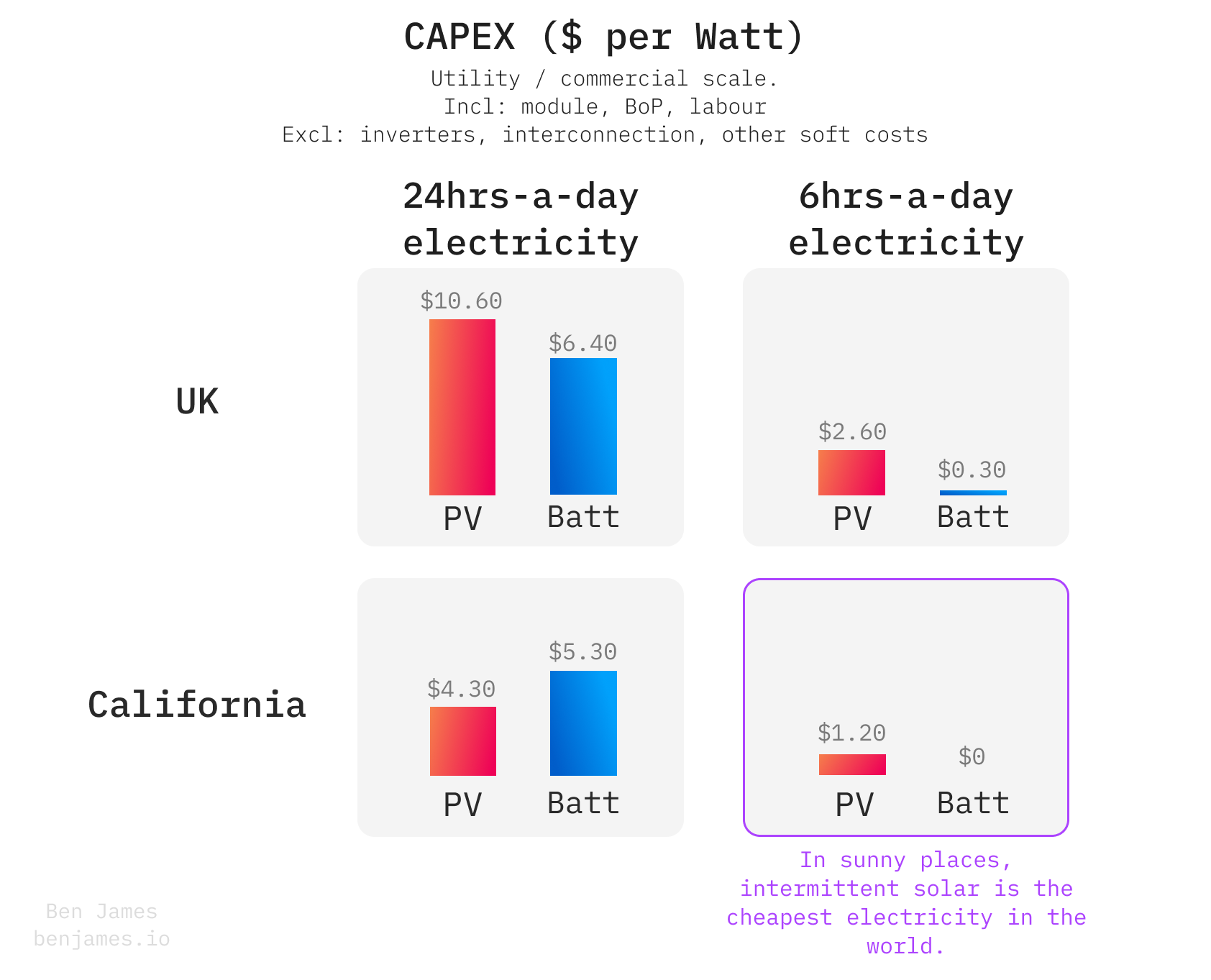
These prices are already quite cheap, but we’ve seen nothing yet. The cost of solar energy in a sunny place is trending towards virtually-free.
This is solar’s opportunity to not just displace electricity supply, but also primary energy supply. Rather than simply supplying energy in the form it’s consumed (electricity), intermittent solar is so fricking cheap that it could manipulate atoms into fuels for subsequent consumption.
We’re talking about using solar to create synthetic kerosene for planes, clean ammonia for fertiliser, clean methanol for shipping, and maybe even synthetic natural gas for general purpose use.
These synthetic and ‘green’ fuels all rely on green hydrogen as a base ingredient. Green hydrogen is extraordinarily expensive to produce, and the only cost-competitive way to make it is off-grid solar.
Off-grid solar is not just one way that synthetic fuels like Sustainable Aviation Fuel can be made - it is the only way that they can be cost competitively produced.
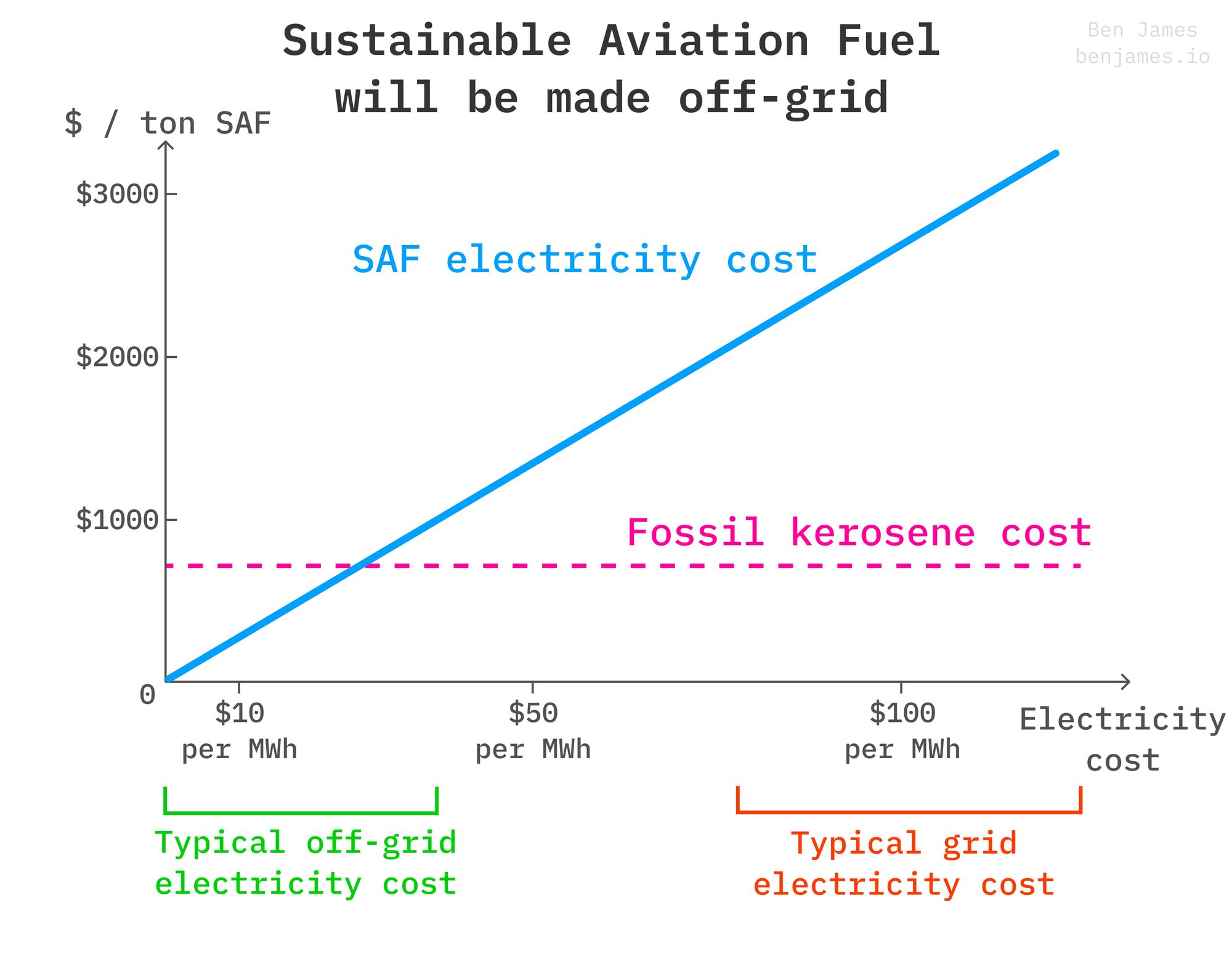
And it’s not just fuel production. Any process that can be tuned to run cost effectively at 25% utilisation is up for grabs. Direct Air Capture, industrial heating, electrochemical-everything; all are fair game.
Taking solar off the grid also has a few other major cost advantages. If you are ripping solar straight into a DC application, you can skip the costs and efficiency losses of inverting that power into AC. If you lose most of the balance of plant, power electronics, and the paperwork of a grid connection, you’re getting really cheap and fast.
Conclusion
The question “can we build processes that use free energy one quarter of the time” is one of the most important and unexplored questions in the future of energy. Make no mistake: it is hard to build these processes, because quartering your output dramatically worsens the payback period for capital intensive process plants. But whilst this is difficult to do, frankly we haven’t tried. Conventional chemical engineering wisdom optimises for expensive inputs, continuous output, and high efficiency. The design space for low utilisation, free energy, is ripe for exploration.
The fact remains: few people optimise for intermittent solar, and intermittent solar will change the world.
-
Thanks to Niko, Sean and Rob for their extremely thoughtful comments on this piece.
The origination of many ideas in this post come from Casey Handmer, who deserves great credit for popularising them. I’ve been unable to recreate numbers as optimistic as his, but we directionally agree on a lot.
Follow me on Twitter/X, and read my other writings: